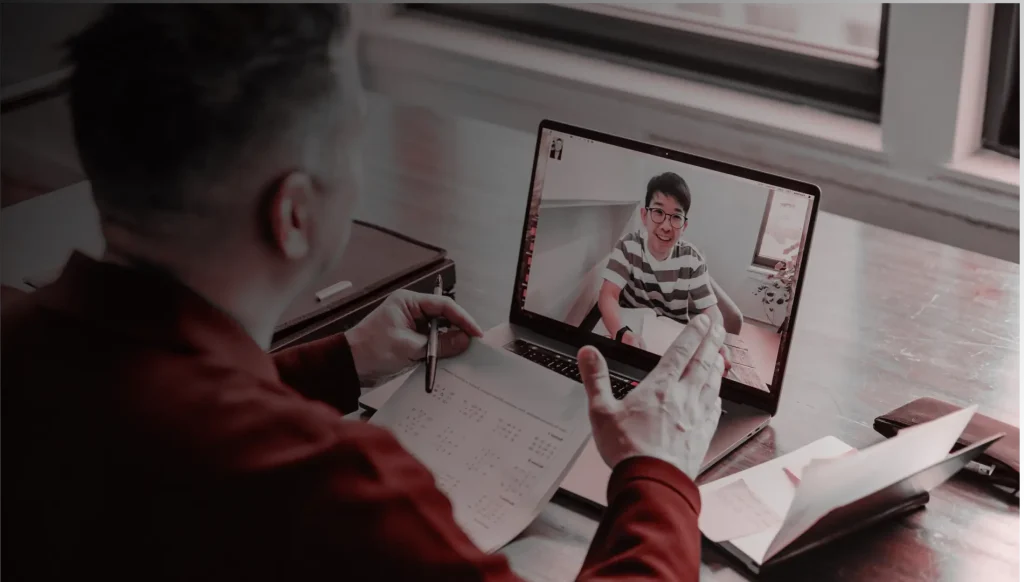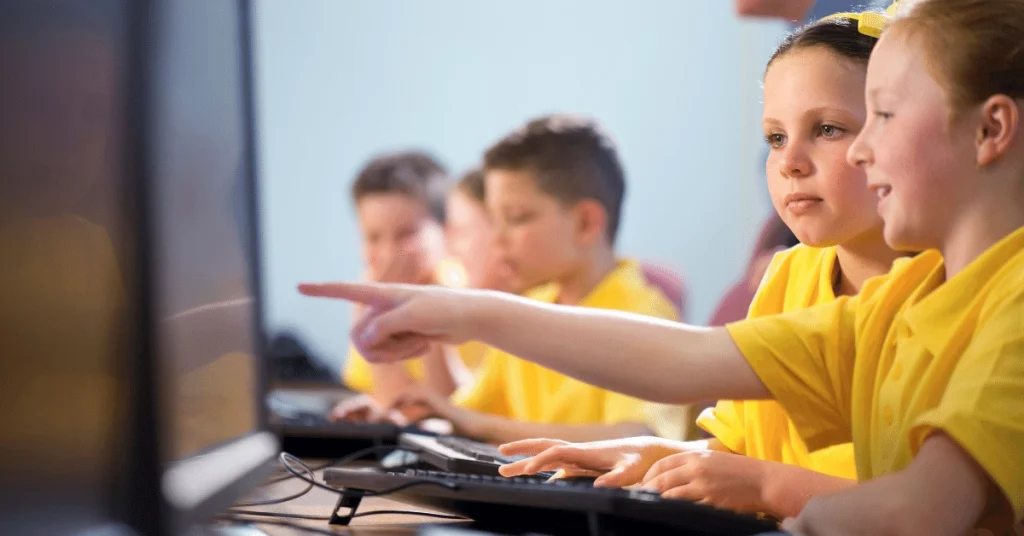Streamlining Administrative Tasks: A Guide to Automation and Efficiency in Education

Discover how automation can revolutionize the way administrative duties are handled in the educational sector, simplifying processes, improving efficiency, and giving instructors more time to focus on teaching and learning.
Anywhere, Anytime Access: Embracing the Advantages of Cloud-Based School Management Systems

Unlock the potential of Cloud-Based School Management Systems for efficient education. Anywhere access, streamlined processes, collaboration, and cost efficiency.
The EdTech Revolution: Start-Ups Shaping the Future of Education

Technological progress has made Ed Tech an essential element of today’s education, with numerous academic institutions taking it on board to enhance learning outcomes. Investigate the influence of Ed Tech on education and how start-ups are aiding its advancement.
5 Ways AI And Machine Learning Benefit EdTech

EdTech evolves with better AI and machine learning. Discover 5 benefits that make EdTech a popular choice for schools and institutions.
The Future of Teaching

The process of learning for human beings is a complex one and is composed of many aspects. Teaching is the attempt to transfer knowledge between two or more people in a meaningful and insightful way, that will stimulate thought, creativity and will hopefully lead to the attainment of a well-rounded education
Blockchain Technology: How it Can Change the Course of Education for Good

How can blockchain be applied in education? With millions of daily users, it offers easy applicability to secure, share and verify learning achievements.
Are Paperless Schools the Future of Education?

Technology nowadays has become a huge part of our lives and especially for the academic sector. Since the 90s, where schools had basic desktop computers, now schools have laptops and VR in the classroom as a norm, we can say that in a very brief time the progress we can see is staggering. This evolution in technology over the past few years has had a tremendous effect both on teachers and students. The classroom, as it was, is already changing and it is being shaped by the progression of technology. This evolution, of course, has influenced all aspects of the school experience: from admissions to absences and so on. But the question is: is a paperless school possible? Would the school system change so much in the forthcoming years that paper will be unnecessary to the teaching process? The era of the digital transition Α few years ago a paperless classroom would have sounded like a great concept but a little unrealistic. And surprise: this is exactly what is happening today! This is done by digitizing teaching material and transferring it into a cloud-based system to remove the paper and introduce an online digital version of these materials. A cloud-based solution can provide solutions to a multitude of problems. Paperless schools can surely have significant advantages. The paperless idea and approach of technology are merely for enriching the educational experience and to align itself with the fast progression of technology. In other words, to improve the learning experience. But everything has its benefits and its disadvantages. Below we will see how the paperless idea will presumably affect both positively and negatively the learning process and certain scenarios that can come up with this technological advancement How it’s done Paper is eliminated in school by replacing all that was being done until now on paper with online systems, such as replacing the admission process with a student information system. In addition, typed letters are being replaced with emails and reference books are being uploaded and made readily available in a digital format in place of physical books. Another way to eliminate paper is to automate paper-based processes that rely on forms, applications and surveys to capture and share data. The benefits The benefits are many, thus more and more schools lean towards the use of Student Information Systems for the improvement of their institution. Time-saving In any job, paperwork is the biggest timewaster let alone when it comes to school administration. With a digital platform, the school staff can save valuable time when it comes to grading, informing and giving feedback to students and parents. The administrative staff can handle manual filings, various printing tasks and sending letters home in a more immediate way. In general, going paperless it’s also an alternative to publishing announcements and reaches out to students easily. In other words, any time-consuming process is simplified and as the saying goes “time is money”. Resource-saving A lot of money is being spent every year in schools on paper. And when we say a lot- A LOT. Research showed that a school consumes around 1,000 sheets of paper per student each year. And, it goes without saying, but which school doesn’t want more resources in their possession? A lot of these savings could pay for teachers’ salaries, classes, excursions or computers to assist educational goals. It is an environment-friendly approach Paper is one of the most consumed resources in the world and also does a huge amount of damage to our environment without realizing it. What better way to help the environment (especially now that it’s literally deteriorating) than reducing paper usage? A huge amount of paper is being used every day by schools and by that we mean piles of forgotten printouts, surplus photocopies and letters to parents that never make it home. It also promotes the idea of environmental consciousness to students and how the school has taken action to help. Reclaim space Using paper is not only harmful to the environment but it takes a lot of space too. We all remember how our schools had walls filled with bookshelves full of old papers; that probably was never used. With that being said, classes and school offices are decluttered resulting in surplus space to be used for something else. For example, additional offices could develop or even new classrooms as well. Organization improvement A paperless system gives the huge advantage of posting class schedules online in order for everyone to have access to them. In that way, the case of misplacement or misinformation is being majorly diminished. In other words, all the data that is needed for a school to function properly are all in one place. This will have an impact both on teachers and students, as teachers will be more efficient and collaborative in their planning and moreover, the school administration will have a clear view on what is actually being taught in the classroom. In addition, the probability of a student’s work is missing is greatly diminished too. Document security Having documents stored in a cloud-based system is generally more secure than having paper documents in physical form lying around; with the possibility of somebody stealing them or misplacing them. In a cloud-based system, access to these documents can be controlled centrally and even deleted from mobile devices at the click of a button. With paperless document management, staff can access the information they need to from anywhere in the school, saving yet more time. Even better, in the event of a disaster such as a fire or a flood, all your electronic documents are retrievable. As well as, in a flood, the school’s information would be safe and sound in the cloud. Preparation of students for the workplace of the future By involving students more and more with technology, we prepare them, in a way, for a highly automated environment. In general, a huge amount of processes in a workplace have been already automated, so by doing so in the educational
Education and Virtual Reality Technology

Education technologies are becoming prevalent in the world of education. New ideas and technologies are developed every day with the goal of simplifying and improving the educational experience for all. Virtual Reality has been around for some time but never so advanced in its capabilities. But what is Virtual Reality? This technology is comprised of pieces of equipment e.g a Headset with a screen covering the person’s eyes and may still include specialized gloves, treadmill or other haptic equipment e.g motion controllers for movement. This equipment allows the user to experience a virtual prefabricated 3D world that can be a reproduction of an existing or imaginary world in which the user can virtually interact with his surroundings. Users of this technology gain both recreational and educational experiences. Virtual Reality can change the status quo in Education and Teaching. Advantages of Virtual Reality technology Virtual reality is a combination of technologies that are used to visualize and provide interaction with a realistic or imaginary environment. For example, a user can explore real places (realistic) through VR or even video games (imaginary interactive environments). There are no choice limitations in the virtual world. Realistic or imaginary, macroscopic or microscopic and as a result broadly applicable in many areas when it comes to education and training. What makes VR amazing and different from any other tool used in education technology is probably the fact that it allows multi-sensory interaction with the space that is visualized. How Virtual Reality can be implemented in education? Virtual Reality technology has been used as a tool for education in a variety of educational levels, from K-12 level to vocational training and military training. Virtual Reality has become a tool to help diversify the way a person can learn. Subjects that have been challenging to many people have become less so, due to the fact that through a more creative and engaging technology such as Virtual Reality people experience the subject live in front of their eyes. This is where virtual reality helps solve problems. Even the most abstract concepts, especially in STEM fields, can be easily comprehended if there is an observable example for the student to experience. It is certainly quite helpful if you can “walk into somebody else’s shoes”. This education model can easily work to society’s advantage. The biggest advantages There are quite a few advantages that the use of virtual reality offers when it comes to education. As we mentioned, this can be an incredible tool, particularly for science and medicine. But what are the advantages when it comes to teaching students via VR? Travelling in space and time Imagine if students could visit places in history such as Ancient Greece, the Roman Empire and experience through VR the rise and fall of Civilizations, Empires. The study of history can change from a tedious reading and teaching based class into an interactive, experiential teaching format that can engage students and make the course fun. Professional orientation Students would be able to experience how it would be to work in many different occupations. This can save students valuable time from choosing an occupation and they can actually make better choices for their future. Instead of making choices that may lead them to a pathway they, later on, will regret, students ca have a better chance of choosing a fulfilling carrier that will bring them not only success but happiness. With that being said, students would be able to actually experience the type of work environments of they choose to, such as hospitals, schools, ships etc. Adopting many different experiences and points of views Virtual reality is an asset in the classroom and will certainly give students experiences that they could not gain otherwise. Virtual reality offers experiences with no limits and at a reasonable cost; they will be able to travel to countries and experience many different cultures, experiences that people a few years ago only dreamed of. This will definitely help in expanding students minds and give them the ability to acquire their own point of view based on real experiences and not just assumptions and generalizations based on what they’ve heard from their social circle or the internet. This revolutionary tool could also possibly make students be kinder and more empathetic as these experiences can hopefully diminish a racist/stereotyping mindset and provide understanding instead. Help students with learning difficulties A large part of the population faces major learning difficulties. Many times, this leads to dropping out of school or not being able to perform at their best because the learning material is quite complex and is not presented in an appropriate way for them. Virtual reality can simplify the learning experience and give an alternative learning method that can be more effective and engaging. The future of Virtual Reality in the classroom To conclude, educational technology is constantly improving with revolutionary new ideas and methods to make learning easier. Virtual reality is one of them and probably one of the most useful. There are not many cons in virtual reality entering the educational world and our children’s classes. The only thing we should worry about is that the educational system is becoming quite stagnant in its approach to teaching. So, the challenge for educators and parents is to be open-minded and trust technology instead of traditional teaching methods. All in all, to go further we need innovation, and this is nothing but taking risks and getting out of our comfort zones. The acceptance of technology is significant for the evolution of society as well as a valuable tool we can use to face the problems of today. We can’t know exactly what the future has instore for education, but the future does look bright! FAQ’s
How Connected Data Improve K12 School Experience

Enhance K12 school success with Classter’s connected data platform. Streamline operations and create a single source of truth with comprehensive tools.
The Evolution of EdTech by 2030: What we Should Expect

EdTech (Education technology) is already part of our lives when it comes to learning. Ιt’s difficult to find a part of our lives that technology hasn’t influenced fundamentally. Educational technology is here for facilitating learning and improving academic performance. Education as a field has been massively and positively influenced by technology. And this influence will be even greater by 2030 according to researchers. The influence of technology on education Research by the World Economic Forum estimates that 65% of children entering primary school will find themselves in occupations that today do not exist. Technology has influenced how businesses are operating. Anyone nowadays can learn to code and therefore create his/her own website or even his/her own business. There are, also, many online libraries that assist teachers and students with comprehensive reading material. Teachers and lecturers are also given the opportunity to post their teaching material online for their students to study. With the current rate of growth in the technology sector, future educational technology is likely to advance the quality of education or even the ways we teach and learn. The digital transformation Digital transformation of many educational functions will happen incredibly fast. This transformation can be managed in-house or by outsourcing it to third-party service providers with expertise in specific industries. It’s already a fact that many educational organizations are adopting cloud-based technologies for marketing and recruiting, as the competition for attracting the best students is increasing. Multi-channel admissions experiences, where prospective students can interact not only by phone and email but also via social networks, video chat, and other similar technologies, will soon be the norm. Also, alumni relations will quickly be adopting modern communication tools to improve alumni engagement. Finally, as the number of on-campus students possibly decreases, other critical functions such as college counselling, career services, and tech support will all be moving to a primarily digital delivery system. The future of technology in education is about adapting to the fast-changing world, giving students an opportunity to choose their own way of learning, combining theory and practice, always considering the current demand on the job market. Education technology in 2030 Educators, EdTech entrepreneurs, as well as people actively involved in education, are trying to make realistic scenarios on what is the future of education technology. All this by taking into consideration the investments that are being made into education and the fact that the global expenditure on education is projected to reach 10 trillion dollars by 2030. We can claim that education will be the most important asset for people and their governments in the future. As global population grows, the education market and its complexity are massively growing too. New skills are entering the picture and as automation is prominent in our every-day lives, kids may be trained for jobs that do not exist right now. In addition, the number of students will be greatly increased with the major driving forces being Africa and Asia, continents that today have a great number of kids who still do not have access to education. The five scenarios for education technology in 2030 Based on the report published by HolonIQ, there are five major scenarios of how the education technology landscape could evolve: Education-as-Usual: This is the scenario that represents education as it is today. Institutions are the main source of education and education technology contribution is present but not a major issue. Regional Rising: Regional cooperation is the act of enhancing relationships through regional rules and institutions in the same state or region. Regional integration has the objective of better cooperation for political and economic purposes. Global Giants: With the internet playing such a prominent role in our lives nowadays, globalization barriers have been removed when it comes to education technology. And this outcome will be even more prominent in the future. Personalized experiences in education will be created and global giants and multinational companies will most likely invest in education and educational technology. Peer-to-Peer: Online learning will be the new norm. The peer-to-peer economy will dominate the way we live, work and learn. Smartphone ownership shapes learning delivery and students will be able to, literally, carry their learning experience in their pockets. Distributed ledger technology underpins the peer to peer economy and supports skills verification. Robo revolution: The advancement of artificial intelligence technology will impact global economic growth by 2030. AI applications and algorithms will replace humans in repetitive tasks and teaching will be assisted by technology. At the same time, new jobs will be hopefully created in order to create and upgrade AI algorithms. EdTech in 2030 Technology in 2030 will play a critical role in education as well as in tech learning processes. It will be focused on information processing, decision making as well as learning. It will help students have a more comprehensive learning experience. AI and Robotics: The future of employment The percentage of jobs requiring AI skills has grown four times since 2013, by 2030 all industries will use AI and robotics especially in the field of marketing and sales. Customer service is a big user of AI technology such as chatbots, product selection and customer classification/routing. That means that traditional jobs in these fields, such as customer service, may disappear. Mobile-only users will shape learning models Mobile devices are already a big part of our lives and this connectivity will certainly shape how learning happens in the classroom. By 2030 half the world’s youth will live in countries with a mobile-first internet connection. Face to face learning will probably be the old way of learning and thus new ways of transferring knowledge through mobile devices will be adopted by teachers and institutions. Learning Management Systems in the future Learning Management Systems (LMS) dominate online environments in every field of education. However, newer technologies with a focus on interaction rather than file management will take over in the future. But, the most important thing is that the learning management system objective is and will stay the same: to make sure everyone
